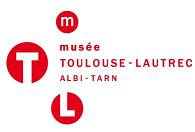Languages
A modern art collection entwined with the history of the museum
A whole storey devoted to this collection of modern art complements the Toulouse-Lautrec inventory. In it you can discover art from the late 19th century to the mid-20th century.
During the 1930s, the Toulouse-Lautrec Museum addressed the issue animating the French art scene: the opening up of public collections to modern art. While the creation of a museum of modern art was being envisaged in Paris, provincial initiatives also sprang up, including that of the Toulouse-Lautrec Museum.
Drawing on the bonds of friendship that existed between Lautrec and the art world he frequented, and thanks to bequests or purchases made by the State to be placed at Albi, the museum brings together:
- A panorama of the artistic trends contemporary with Lautrec: synthetism (Gauguin, Émile Bernard), the Nabis (Maurice Denis, Bonnard, Vuillard, Valloton), but also the work of artists who inspired him (Forain, Degas) or fellow students who were close to him during his years of training under Fernand Cormon (Rachou, Gauzi, Louis Anquetin, Valadon).
- Works by the most famous painters of the early 20th century (Matisse, Marquet, Dufy, Van Dongen) and renowned sculptors (Bourdelle, Maillol, Despiau).
- A significant collection of artists who were “Witnesses of their age”, renowned at that time in the worlds of art and culture, the so-called “Poetic realism” painters (Brianchon, Cavaillès, Legueult, Limouse, Oudot, Terechkovitch), who promoted art in the French tradition, to which a sculptor like Paul Belmondo could also be added.
Ancient art collection
The ancient art collections formed the very first inventory of the museum, put together in the late 19th century. A number of quality works have been preserved, such as a canvas by Francesco Guardi (1712-1793), L'église Santa Maria della Salute à Venise, or two original works by Georges de la Tour (1593-1652): Saint Jude Thaddée and Saint Jacques le Mineur.
